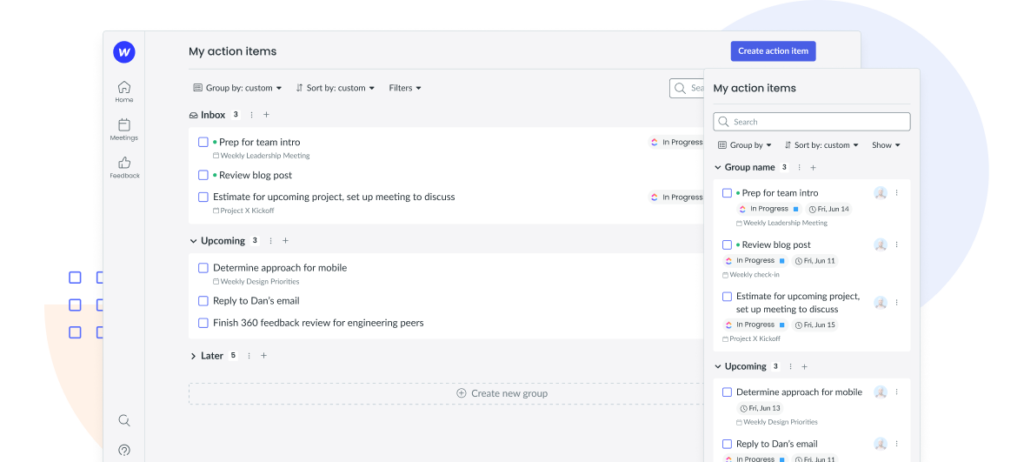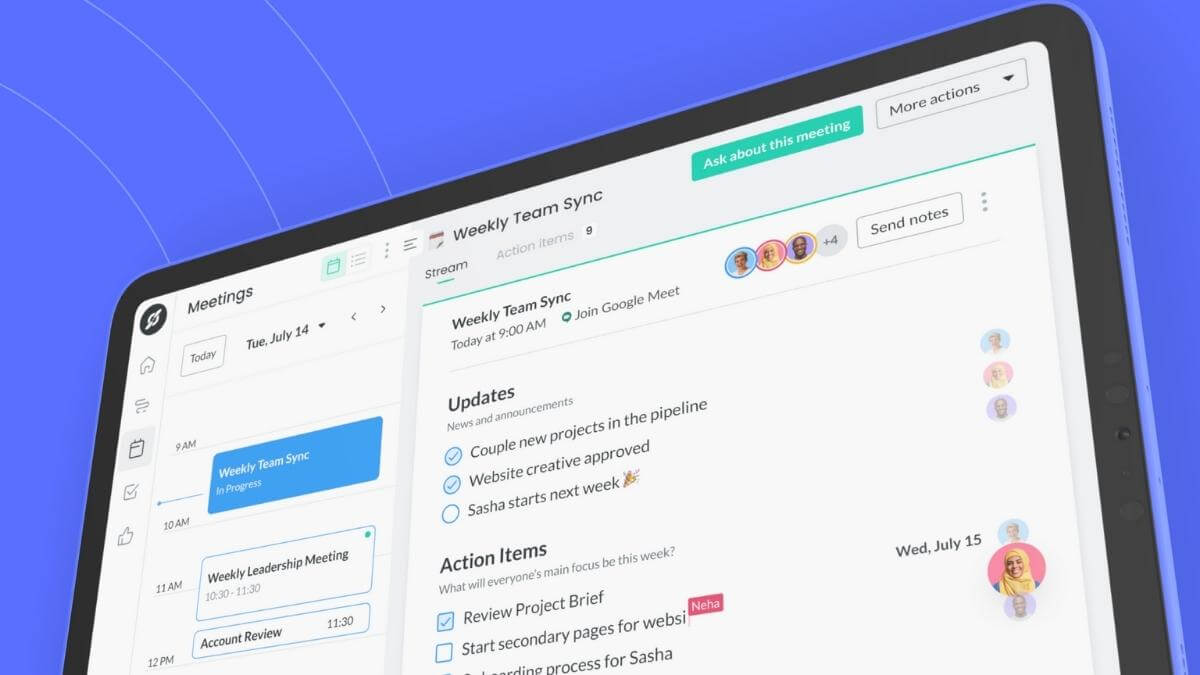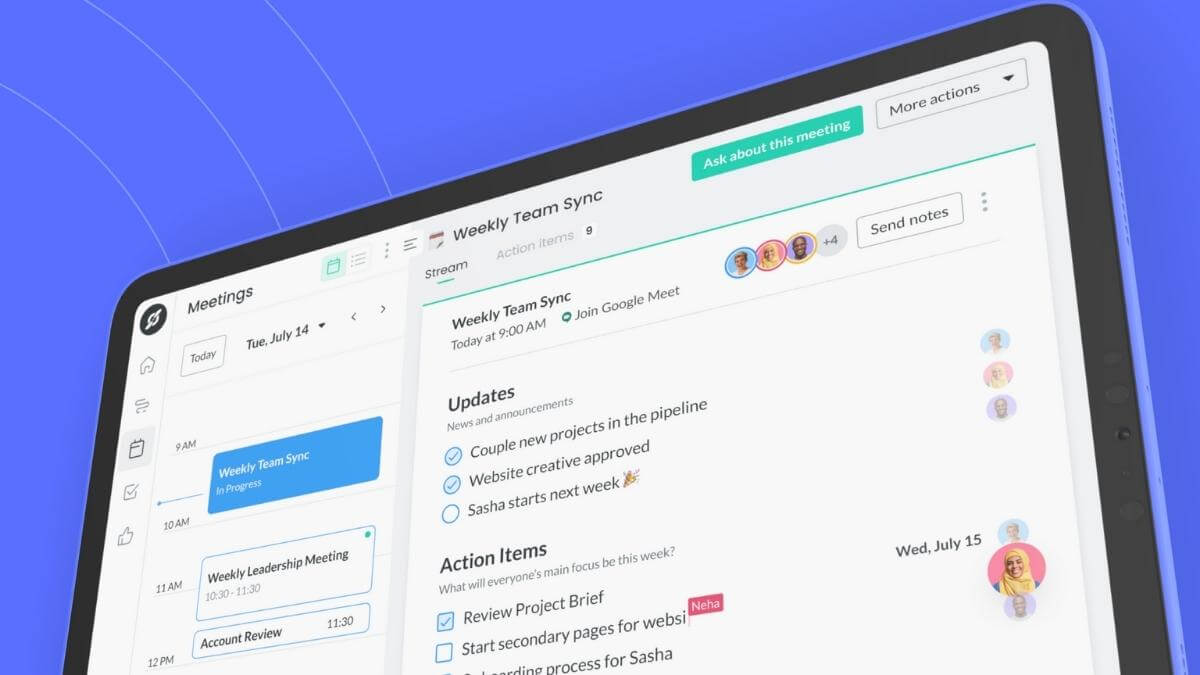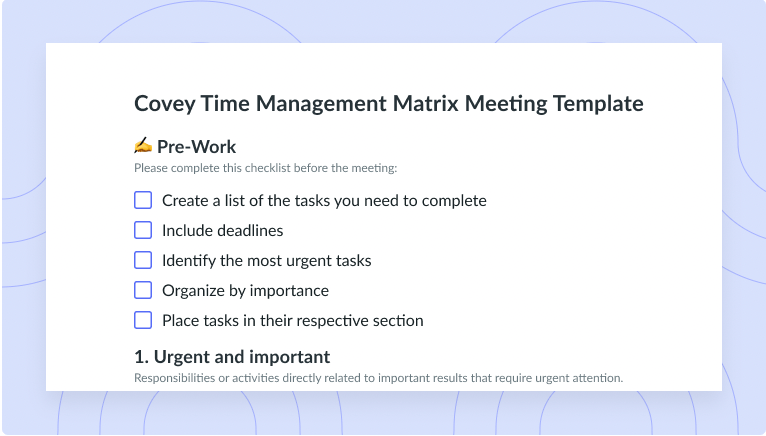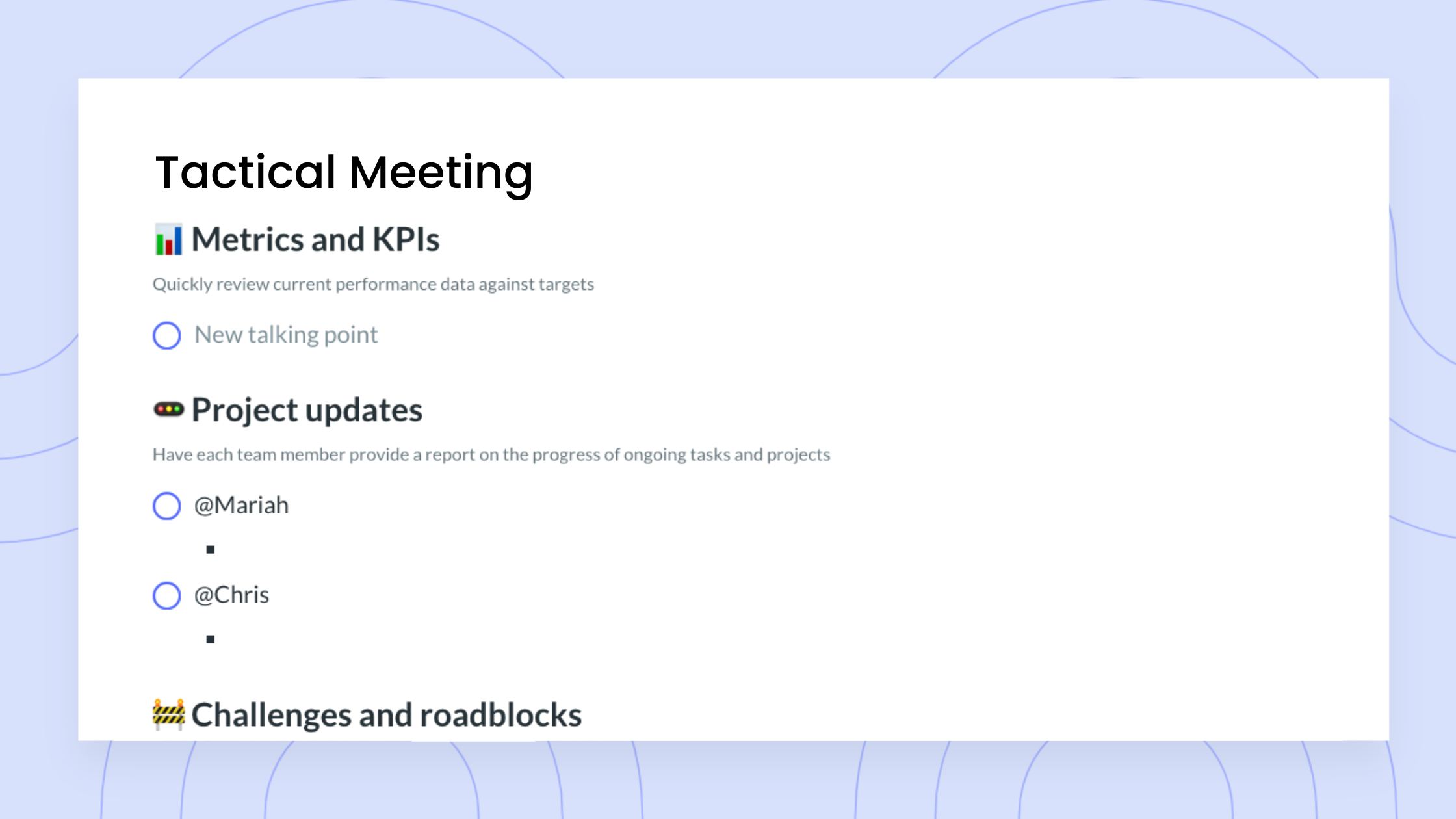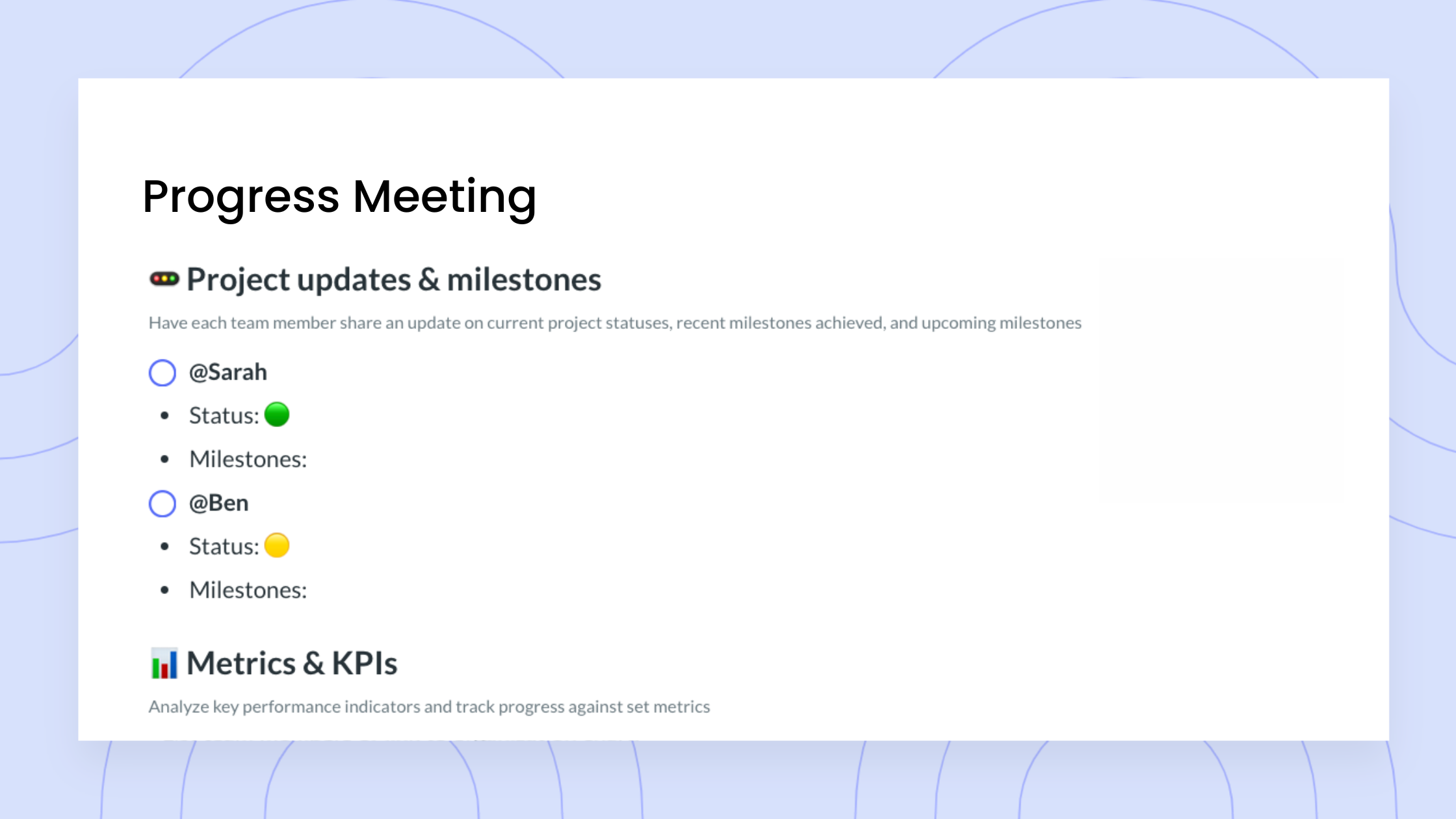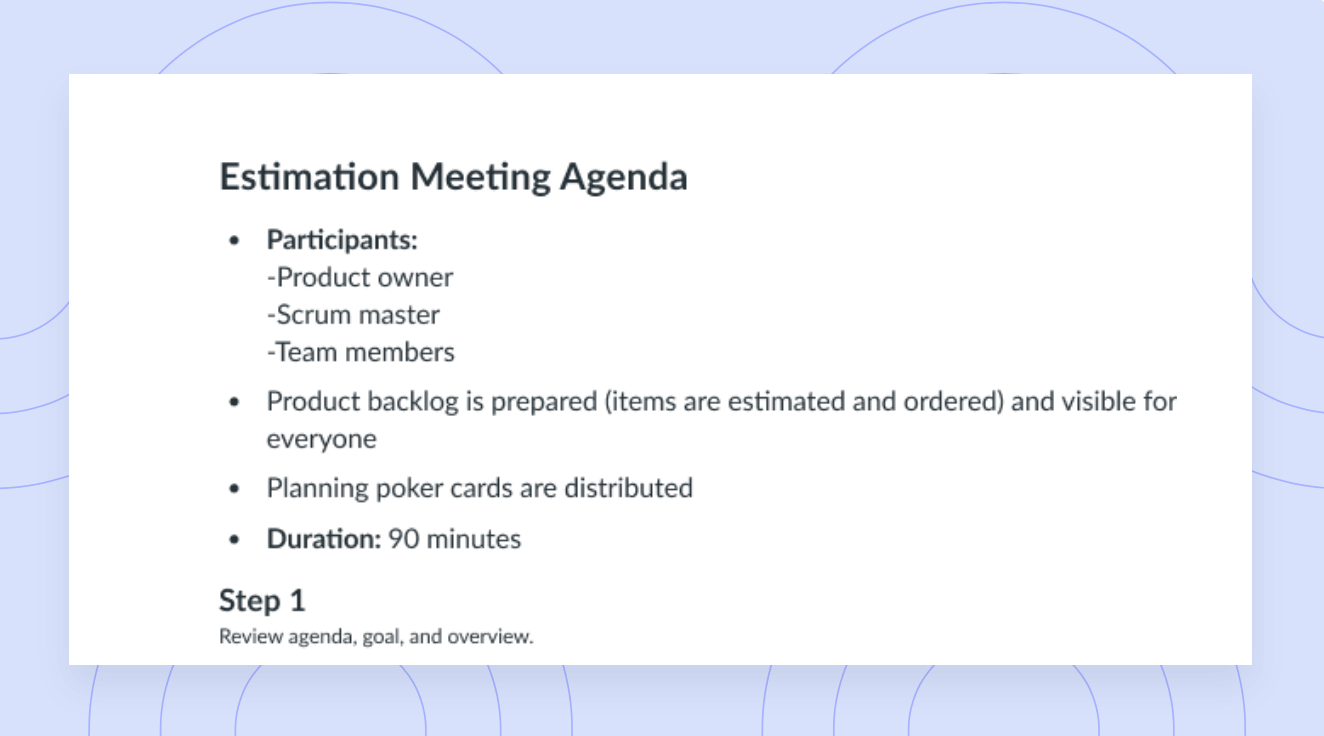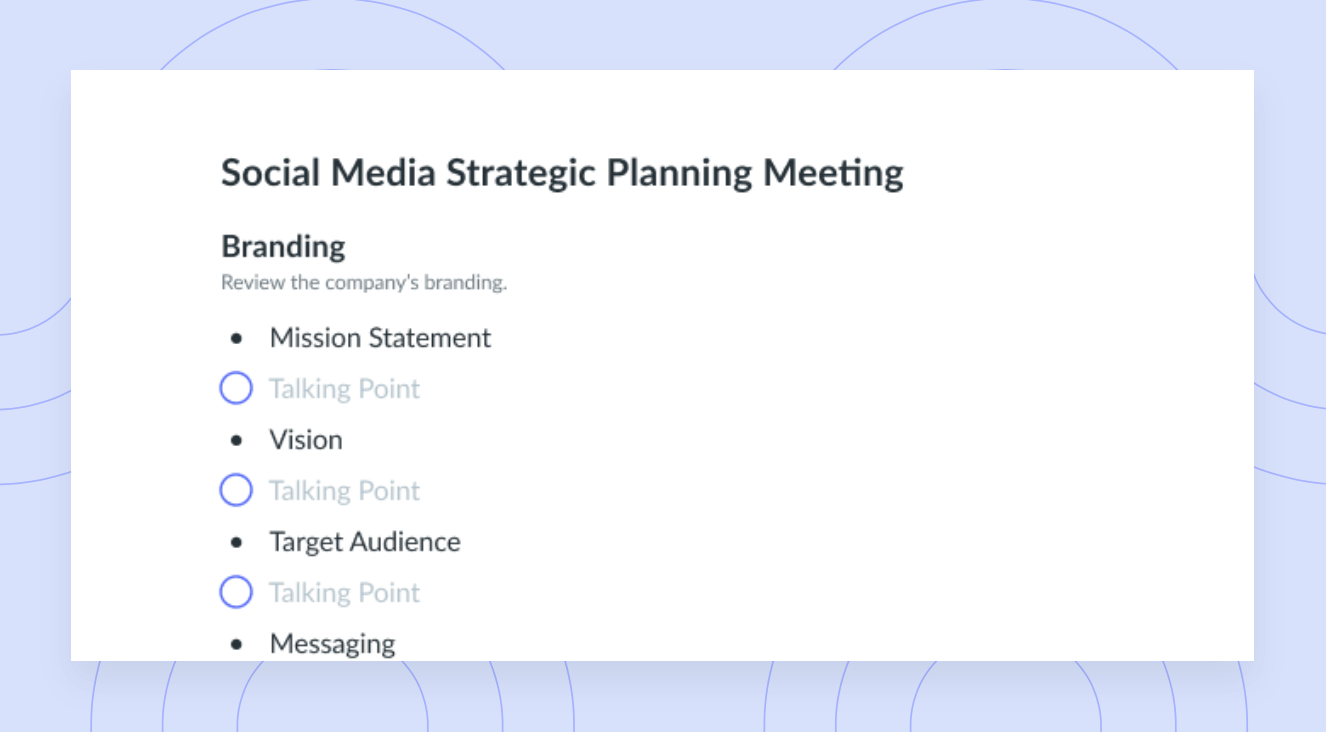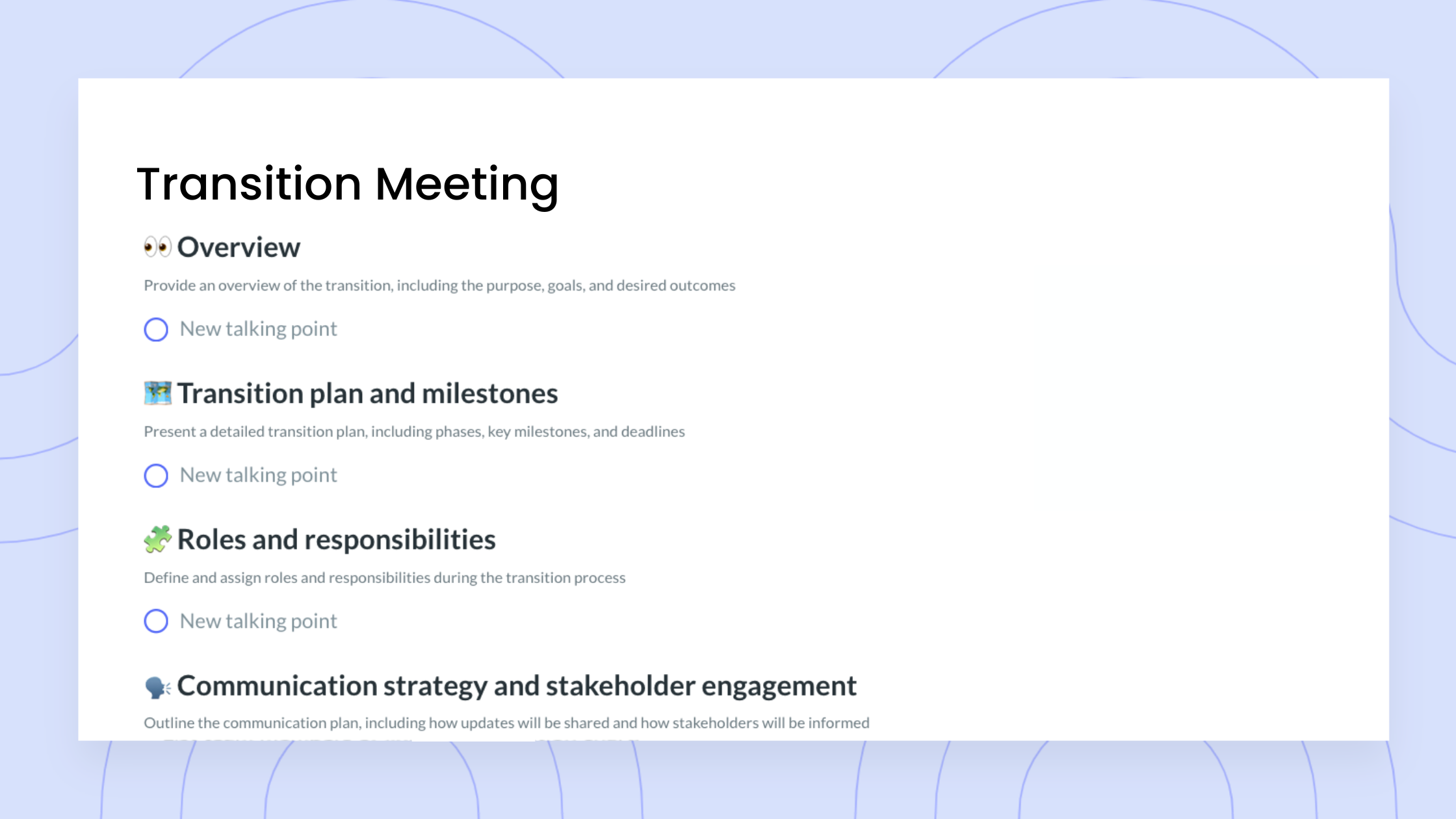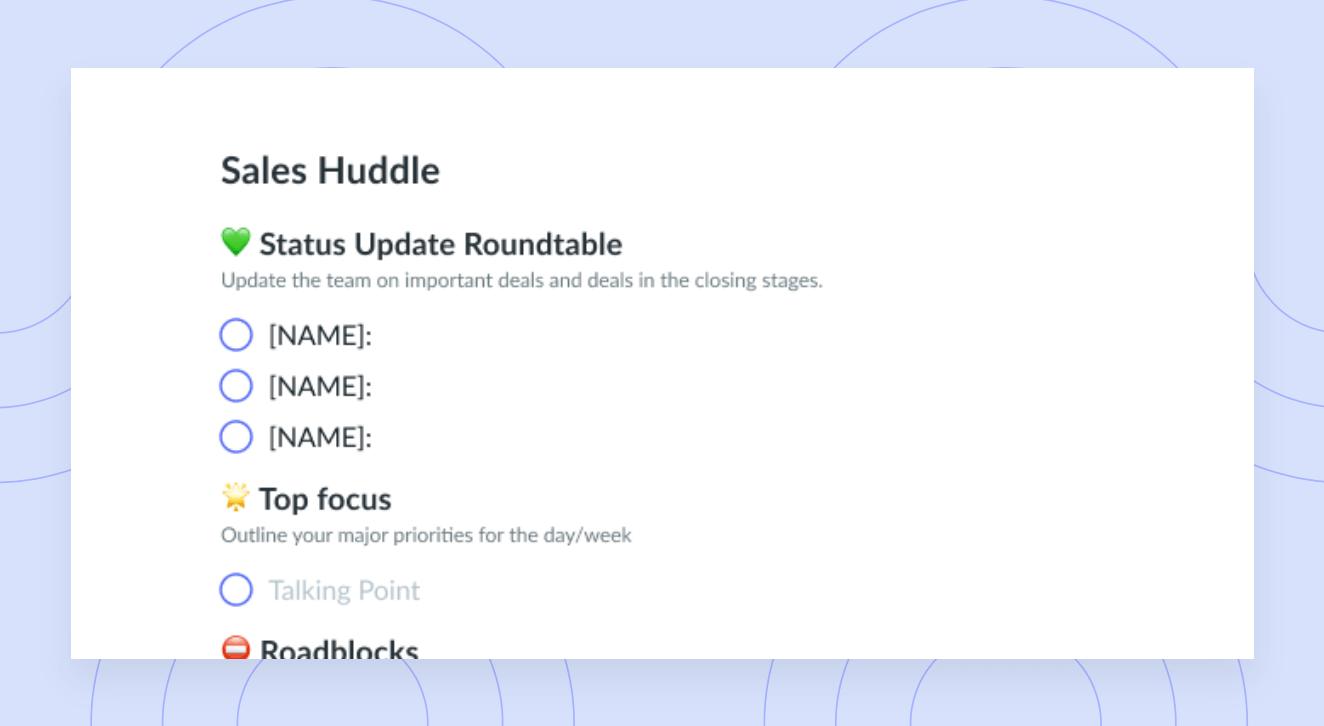Work Management: Everything You Need to Know
Boost your team's productivity in 2024 by following these five key components of work management and the tools that can help.
What do your employees spend most of their days doing? Which of their tasks take up time that could be better spent on other areas of your business? And how do you know if your employees are even on track to meet their goals? All of these questions are important to ask if you’re prioritizing efficiency for your team. As you start thinking, you’ll need to be mindful of work management best practices and tools to make a clear plan for making your team as productive as possible in the new year.
- What is work management?
- Work management vs project management
- Why is work management important?
- Key components of work management
- Examples of work management software
What is work management?
Work management is the activity of reviewing and prioritizing tasks for an employee or team. It is an ongoing practice to ensure that teams are working on the right projects and that they will be able to complete their deliverables within the assigned time frame. Usually, a manager or operations lead is responsible for overseeing work management for their team, department, or company; however, individuals can also practice it for their own workloads.

Track action items, get more done
Keep the momentum going after your meeting is over. With Fellow, you can assign, visualize, and prioritize all your meeting to-dos in one place and sync them with Jira, Asana, and Zapier.
Work management vs project management
Project management is another commonly used term in the workplace that describes the supervision, review, and support of deliverables to ensure that they will be done on time. The key difference between the two terms is that while work management activities continuously oversee the entire workload of an employee or team, which might include tasks from multiple projects, project management is only focused on a set of activities related to one specific project that has an end date.
A project manager will also usually delegate work to employees across various departments on a project-by-project basis, whereas a work management leader will have one team or department to oversee all the time.
Why is work management important?
Ensuring that employees have their workloads balanced is crucial to prevent burnout and increase the likelihood that teams will meet their shared goals. Burnout occurs when teams are taking on too many requests at once, working overtime, or lacking the resources to do a job, for example. Having a manager oversee work ensures that high-priority tasks that align with the team’s shared goals are focused on first. The work management leader will also manage expectations with other teams that are submitting work requests. In turn, work-life balance is better supported for the team, and high-impact activities are prioritized. Using tools like Fellow can help you manage work better for your team, making it easy to assign and delegate tasks, set goals, and automate certain processes.
Key components of work management
Goal setting and planning
The first major responsibility in the work management process is determining the team’s goals. You may want to run a goal-setting workshop to get ideas and input. Many organizations also follow an objective and key result (OKR) model where the top level of the company sets the strategic direction. This helps lower-level teams set more specific goals that will, in turn, help the company meet its overarching objective. It’s good to have a plan for the next quarter and the next fiscal year in place.
Task delegation
It’s likely that your team already has a backlog of tasks that are waiting to be completed. If not, set up a brainstorming session to ideate new initiatives that align with the goals that were just set.
From here, delegate tasks to your team. It’s best to give tasks to specialists who are experts in the area or to employees who want growth opportunities in that area.
Resource allocation
An important step is to ensure that your team has everything it needs to be successful. Staffing is one part of resource allocation. For example, if you’re managing other leaders, make sure they have enough employees or outside support to help. Other resource allocation areas are budget, time, and tools. Keep in mind that some tools, like software systems, may need to have an upgraded license to support the activity’s goal.
Process optimization
Operations managers are fantastic at process optimization! A good area to start is by asking your team members where they normally find friction in their day-to-day work. For example, they might suggest improvements in approval processes, task-tracking software, or knowledge-sharing systems.
Risk management
Risk management activities should be considered at all times when you’re conducting work management practices. Continuously review work that is being assigned and try to spot any possible areas for risk. You can also host a risk review meeting to cover these ideas with your team. Some examples of risks that could occur are:
- A deliverable not being able to be completed on time due to lack of resources.
- Process blocks that cause bottlenecks.
- Miscommunications that cause employees to work on the wrong priority or in the wrong process.
- Legal requirements such as non-disclosure agreements, intellectual property rights, local laws, or other regulations that might prevent a task from moving forward.
Examples of work management software
Fellow
Fellow was first born as a meeting management software, but now has developed a ton of enhanced, automated features that support work management practices for teams of any size in this current day and age.
Key features:
- Document and track team OKRs in a shared space to ensure meeting topics and action items align with your goals.
- Assign action items during meetings, which will automatically be added to employees’ to-do lists.
- Automatically record, transcribe, and summarize your meetings in up to 10 languages—all centralized in one place.
- Integrate the tool with project management software like Jira or Asana.
Pricing: Starts at $7 per user per month
Learn more about Fellow’s plans
Asana
Asana is a popular tool for work management as it allows teams to work within the same platform while keeping each function organized.
Key features:
- Add status update labels directly to team-based or project-based portfolios to keep work organized and measure progress.
- View a workload management dashboard to see how many projects and tasks each employee is contributing.
- Create custom forms to collect new work requests and then have those tasks automatically assigned or placed on the proper project board.
Pricing
- Personal: $0 per user per month (for individuals or small teams)
- Starter: $13.49 per user per month (includes project reporting functionality)
- Advanced: $30.49 per user per month (includes resource management tools like time tracking)
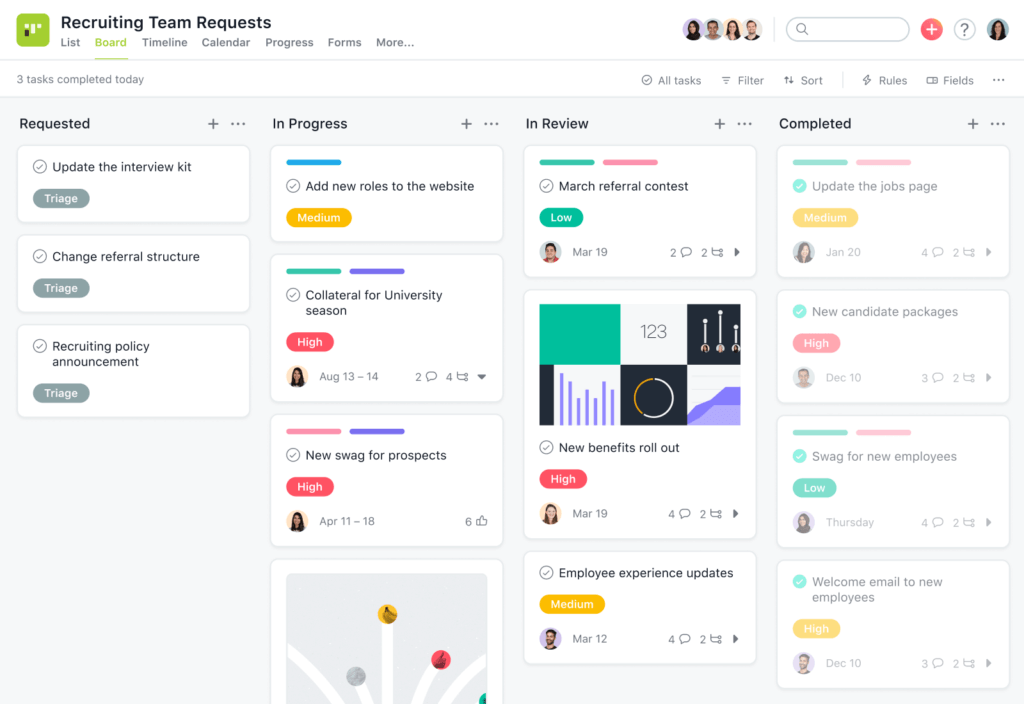
Zoho
Zoho is a cloud-based platform with a ton of department-specific apps to cover business areas like sales, marketing, finance, customer service, development, legal, and human resources.
Key features:
- Set up a dashboard to oversee tasks and timesheets in one place so you know how long it takes to complete work.
- Mark issues on projects to notify others when you’re facing a block.
- Create task automation workflows that save time from having to manually assign new work or move items around.
Pricing:
- Free: $0 per user per month (for up to 3 users)
- Premium: $5 per user per month (includes task automation support)
- Enterprise: $10 per user per month (includes the ability to view global resource utilization and project dependencies)
- 10-day free trial available for all paid plans
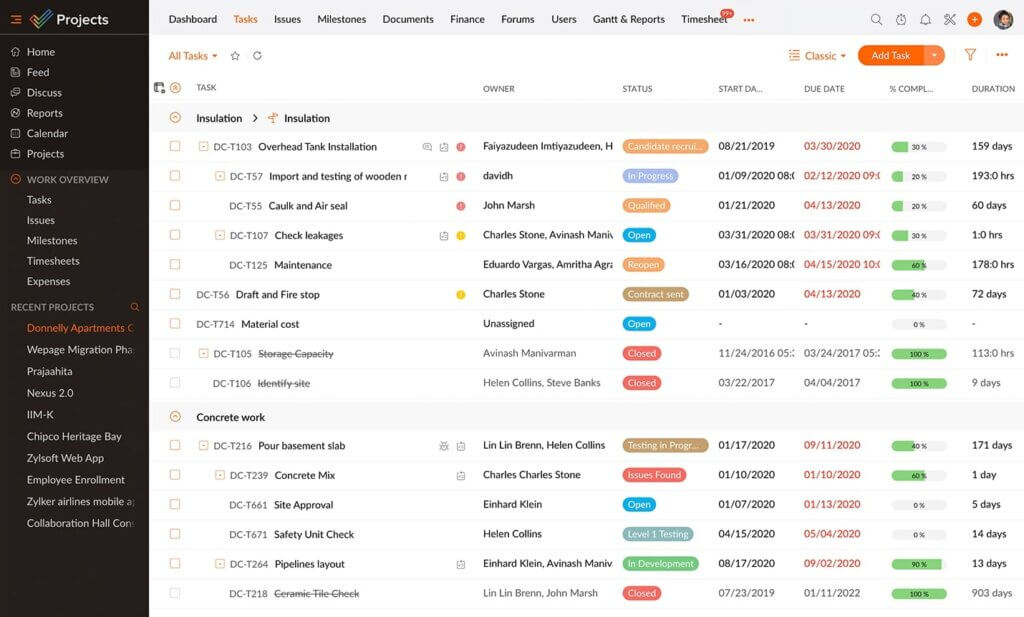
Monday.com
monday.com has a few products that are great to help teams collaborate, but their best and biggest one is their Work Management app!
Key features:
- Use a built-in goals and strategy tracker to develop plans that align with your business objectives.
- Request, grant, and track approvals from all projects or team members from one interface.
- Leverage resource management tools to measure time, budget, and staffing.
Pricing:
- Free: $0 per seat per month (for up to 2 seats)
- Basic: $8 per seat per month (for a minimum of 3 seats; includes dashboard creation)
- Standard: $10 per seat per month (for a minimum of 3 seats; includes calendar view and integrations)
- Pro: $16 per seat per month (for a minimum of 3 seats; includes time tracking, dependencies, and automation)
- Enterprise: custom plans available
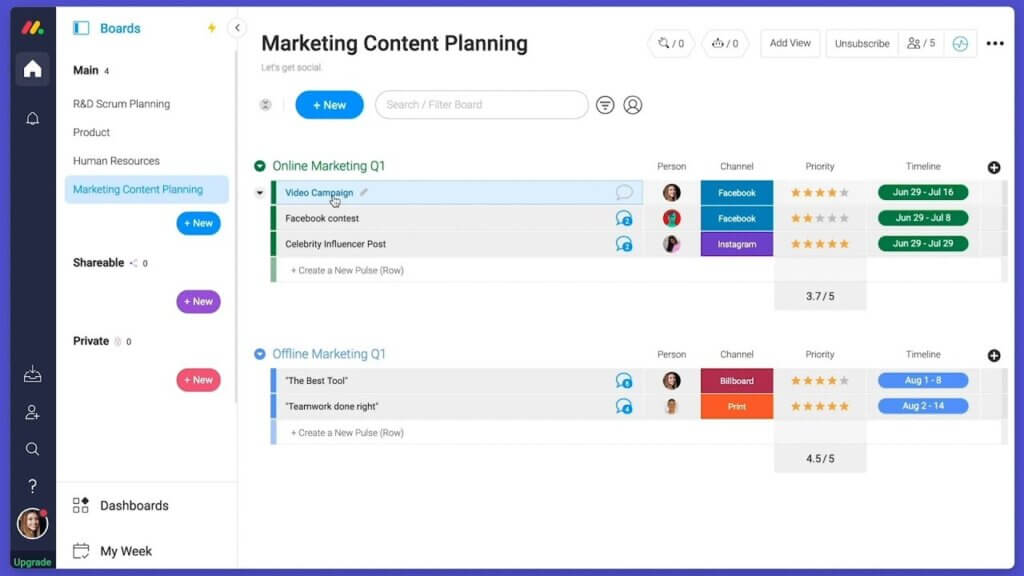
ClickUp
ClickUp is a large team collaboration platform that offers a ton of flexibility and functionality. It’s a great tool for remote teams looking for a new way to stay on top of shared work!
Key features:
- Use fully customizable dashboards to report on real-time project updates.
- Choose from multiple views to see different perspectives, such as the entire team’s workload or the daily tasks coming up for one employee.
- Leverage built-out tasks and projects that are linked directly to measurable goals documented in the platform.
Pricing:
- Free: $0 per member per month (best for individual use)
- Unlimited: $7 per member per month (includes resource management and agile project tracking)
- Business: $12 per member per month (includes goal folders and advanced reporting)
- Enterprise: custom plans available
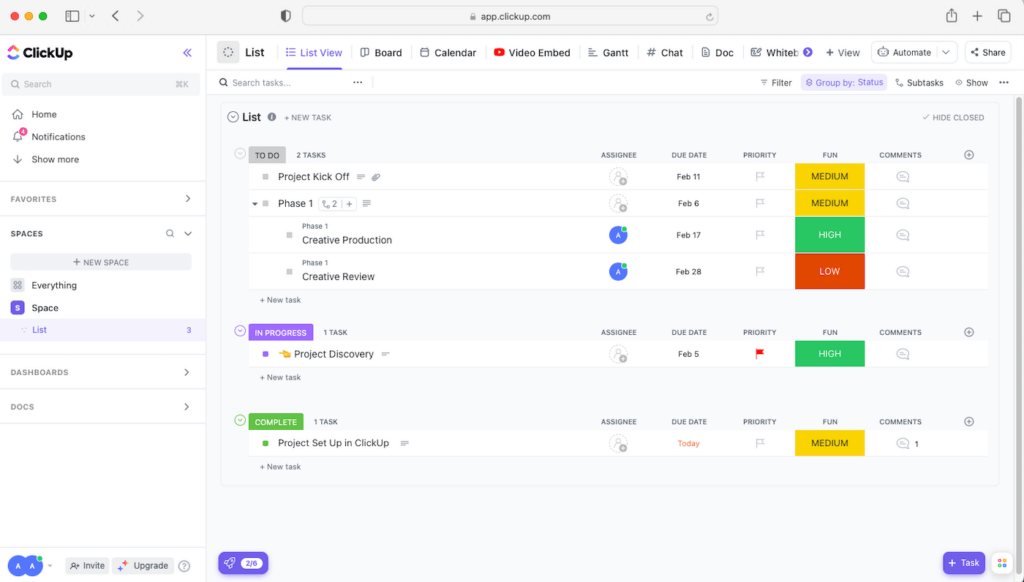
Parting advice
A lot of effort goes into work management, especially since it’s a never-ending activity. Focus on finding a routine and tools that align with your team’s strengths and requirements. Soon, you’ll be able to start automating tasks, getting data-driven insights about workloads, and measuring resources to allocate for each activity. This will help you budget appropriately, avoid burnout, and make sure your team is always orienting around high-priority goals—which drives up your efficiency!
